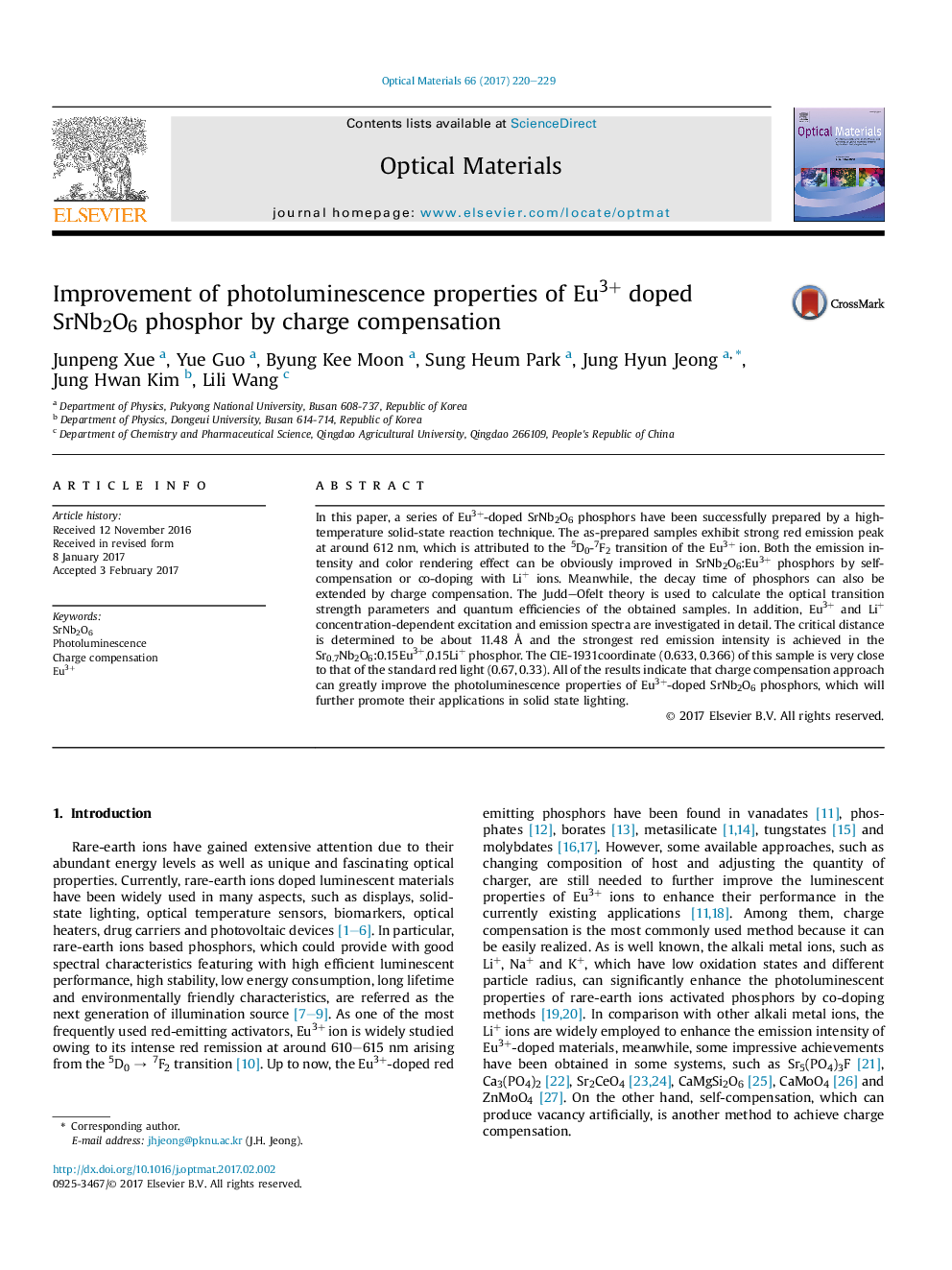| Article ID | Journal | Published Year | Pages | File Type |
|---|---|---|---|---|
| 5442808 | Optical Materials | 2017 | 10 Pages |
Abstract
In this paper, a series of Eu3+-doped SrNb2O6 phosphors have been successfully prepared by a high-temperature solid-state reaction technique. The as-prepared samples exhibit strong red emission peak at around 612Â nm, which is attributed to the 5D0-7F2 transition of the Eu3+ ion. Both the emission intensity and color rendering effect can be obviously improved in SrNb2O6:Eu3+ phosphors by self-compensation or co-doping with Li+ ions. Meanwhile, the decay time of phosphors can also be extended by charge compensation. The Judd-Ofelt theory is used to calculate the optical transition strength parameters and quantum efficiencies of the obtained samples. In addition, Eu3+ and Li+ concentration-dependent excitation and emission spectra are investigated in detail. The critical distance is determined to be about 11.48Â Ã
and the strongest red emission intensity is achieved in the Sr0.7Nb2O6:0.15Eu3+,0.15Li+ phosphor. The CIE-1931coordinate (0.633, 0.366) of this sample is very close to that of the standard red light (0.67, 0.33). All of the results indicate that charge compensation approach can greatly improve the photoluminescence properties of Eu3+-doped SrNb2O6 phosphors, which will further promote their applications in solid state lighting.
Related Topics
Physical Sciences and Engineering
Materials Science
Ceramics and Composites
Authors
Junpeng Xue, Yue Guo, Byung Kee Moon, Sung Heum Park, Jung Hyun Jeong, Jung Hwan Kim, Lili Wang,
